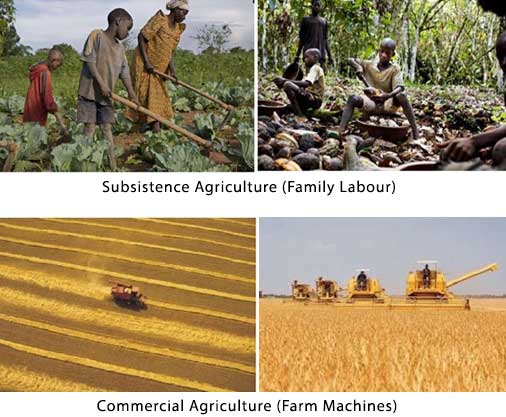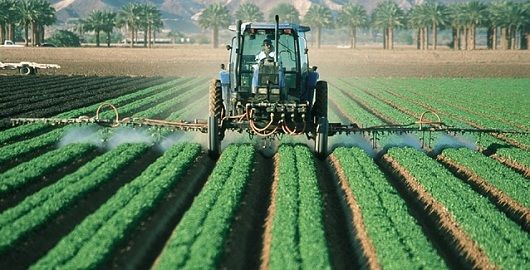The Duty of Modern Technology in Commercial Farming vs Subsistence Farming Techniques
The Duty of Modern Technology in Commercial Farming vs Subsistence Farming Techniques
Blog Article
Checking Out the Differences In Between Commercial Farming and Subsistence Farming Practices
The duality between commercial and subsistence farming practices is noted by varying goals, operational scales, and source application, each with extensive ramifications for both the atmosphere and society. Alternatively, subsistence farming stresses self-sufficiency, leveraging standard approaches to maintain home demands while nurturing community bonds and social heritage.
Economic Objectives
Financial purposes in farming practices often determine the methods and scale of operations. In industrial farming, the primary financial objective is to take full advantage of revenue.
In comparison, subsistence farming is mostly oriented towards satisfying the prompt requirements of the farmer's family, with excess manufacturing being minimal - commercial farming vs subsistence farming. While business farming is profit-driven, subsistence farming is focused around sustainability and resilience, reflecting an essentially different set of financial imperatives.

Range of Operations
The difference in between business and subsistence farming becomes especially noticeable when taking into consideration the scale of procedures. The range of industrial farming permits for economic climates of range, resulting in decreased expenses per unit with mass production, enhanced effectiveness, and the ability to spend in technological innovations.
In stark contrast, subsistence farming is usually small-scale, focusing on creating simply sufficient food to fulfill the prompt requirements of the farmer's family members or regional community. The land location entailed in subsistence farming is usually restricted, with much less access to modern-day technology or mechanization.
Source Use
Resource use in farming practices reveals substantial differences between industrial and subsistence approaches. Business farming, identified by large-scale operations, frequently employs innovative modern technologies and automation to optimize making use of sources such as land, water, and plant foods. These methods permit boosted performance and greater performance. The emphasis gets on optimizing results by leveraging economies of range and releasing resources purposefully to guarantee regular supply and productivity. Accuracy farming is significantly embraced in commercial farming, using information analytics and satellite innovation to keep an eye on plant health and maximize source application, more boosting yield and source performance.
In contrast, subsistence farming operates on a much smaller scale, largely to satisfy the instant requirements of the farmer's family. Resource use in subsistence farming is commonly limited by financial restraints and a reliance on typical methods.
Environmental Influence

Alternatively, subsistence farming, practiced on a smaller range, typically utilizes typical techniques that are extra in consistency with the surrounding environment. While subsistence farming usually has a reduced ecological impact, it is not without obstacles.
Social and Cultural Ramifications
Farming practices are deeply intertwined with the social and cultural fabric of neighborhoods, influencing and showing their values, customs, and economic frameworks. In subsistence farming, the emphasis gets on cultivating adequate food to meet the instant requirements of the farmer's household, typically cultivating a strong feeling of area and shared obligation. Such methods are deeply rooted in neighborhood see here traditions, with knowledge passed down with generations, thus maintaining social heritage and strengthening communal ties.
On the other hand, business farming is primarily driven by market demands and productivity, frequently leading to a shift towards monocultures and massive procedures. This technique can bring about the erosion of traditional farming practices and cultural identifications, as regional custom-mades and knowledge are supplanted by standard, industrial approaches. Additionally, the concentrate on efficiency and revenue can occasionally decrease the social communication discovered in subsistence neighborhoods, as economic deals replace community-based exchanges.
The dichotomy between these farming practices highlights the more comprehensive social ramifications of agricultural selections. While subsistence farming supports social connection and community interdependence, commercial farming straightens with globalization and economic growth, often at the price of conventional social structures and multiculturalism. commercial farming vs subsistence farming. Stabilizing these aspects stays a critical obstacle for lasting agricultural development
Verdict
The assessment of industrial and subsistence farming methods reveals substantial differences in goals, range, source use, environmental influence, and social effects. Commercial farming focuses on earnings and efficiency through large-scale procedures and advanced technologies, typically at the price of environmental sustainability. Alternatively, subsistence farming stresses self-sufficiency, making use of standard methods and regional sources, thus promoting see post cultural preservation and area communication. These contrasting approaches highlight the complex interaction in between financial development and the demand for eco sustainable and socially inclusive farming practices.
The duality between commercial and subsistence click this link farming methods is noted by differing goals, operational ranges, and source application, each with extensive ramifications for both the atmosphere and culture. While commercial farming is profit-driven, subsistence farming is centered around sustainability and durability, showing an essentially various collection of economic imperatives.
The distinction in between commercial and subsistence farming comes to be specifically evident when considering the range of operations. While subsistence farming sustains social connection and area interdependence, business farming lines up with globalization and economic growth, usually at the price of conventional social structures and cultural variety.The evaluation of industrial and subsistence farming methods discloses considerable differences in goals, scale, resource usage, ecological effect, and social ramifications.
Report this page